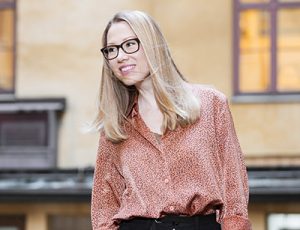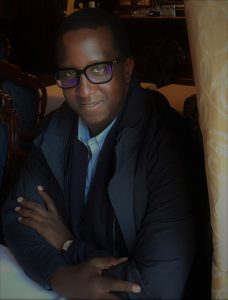Tue 19th of September at 6 pm
Design Museum, Helsinki
Growing tensions will easily lead to conflict, but whether conflict will erupt violently or be defused peacefully is a question of conflict management and negotiation. This discussion mediated by Heini Lehtinen is the first in Design Museum’s series of six discussions with curators. It focuses on alleviating confrontation and establishing contact in extreme situations.
Lehtinen’s guest is Itonde A. Kakoma, an expert of Crisis Management Initiative (CMI). How can we move on from confrontation and hatred to bringing the different sides together? How can the mechanisms and practices of peace negotiations be applied, for example in the design of public space or services? How can design be used to foster contacts between people in a peace-time society?
‘I regard design as activity that mediates and communicates values and influences the ways of thought and behaviour of individuals and the community. It involves building interaction and relationships between people, and between people and their environment.’ –Heini Lehtinen
Enter and Encounter is a joint exhibition produced by Design Museum and the Finnish Association of Designers Ornamo and displaying contemporary Finnish design after Helsinki’s Design Capital Year of 2012. In our interview, Heini Lehtinen tells about preparing the Enter and Encounter exhibition and the topic of the first discussion.
How did the exhibition come about and what was your role in it?
Enter and Encounter is a collaboration involving six curators. All six of us – Paula Bello, Katja Hagelstam, Juha Kronqvist, Ville Tikka, Esa Vesmanen and I – represent highly different perspectives on contemporary design, from strategic to service design, from design management to social design, and from crafts to furniture and spatial design. My perspective is closely associated with social design and promoting mental and physical well-being with the means of design.
The curator team met for joint workshop days and meetings, to which everyone brought their suggestions for the content of the exhibitions. Tens of proposed design projects and the different approaches of the curators led to interesting and fruitful discussions. The series of open curator-hosted discussions will present these perspectives and exchanges of views to the public.
How would you summarise the theme of the discussion hosted by you?
To establish a connection between people or between people and the environment is one of the most important preconditions of mental well-being. People today, however, are separated to a great degree from both each other and their environment.
Social uncertainty and confrontation have grown considerably in Europe and the United States. This gives added importance to conflict management and negotiation skills, and to the need to foster mutual understanding between opposing sides even in peace-time society.
Why did you choose peace mediation expert Itonde Kakoma as your guest?
International conflict management and peace negotiations are an extreme example of establishing contact between different and often opposing parties. I invited as my guest to the discussion Itonde Kakoma, an expert with the Crisis Management Initiative CMI peace brokering organisation. I want to discuss with him the architecture of peace negotiations and how design can help create unity also in peace-time society.
Founded by former President of Finland and Nobel Peace Prize winner Martti Ahtisaari, Crisis Management Initiative CMI is a peace brokering organisation and a highly regarded international actor. Over the past year, peace mediation and conflict management have also been mentioned as Finnish export expertise of the future.
My guest Itonde Kakoma has studied the process of peace negotiations from the perspective of design.
What would you like ordinary museum visitors to gain from the Enter and Encounter exhibition?
The projects chosen for the exhibition question familiar and conventional procedures and perspectives. But instead of just criticising, the exhibition suggests alternative forms of action. I would like this exhibition to give visitors a concrete idea of what design can be, and how it can influence our everyday experiences, environments and well-being.
Heini Lehtinen is a creative director and writer specializing in questions of social sustainability from design perspective. She approaches social issues and human well-being through mind-body-space axis, aesthetics, architecture, psychology, and neuroscience. She is a co-editor of a book ‘Studio Future – Future Thinking in Art and Design’ (2018), and a co-founder of Fictional Journal, an online platform for design in cultural-societal context. Her studies include a BA degree in Interior and Lighting Design at Helsinki Metropolia University of Applied Arts in Finland, and a research-based Master of Design degree at Design Academy Eindhoven in the Netherlands. Lehtinen is currently based in Brussels, Belgium.
www.heinilehtinen.com
Itonde A. Kakoma is the Head of Region for Sub-Saharan Africa at CMI, overseeing the dialogue and mediation efforts of CMI in the region. Previously, he served as the Assistant Director of the Conflict Resolution Program at the Carter Center, managing the Center’s peace initiatives and supporting President Carter’s efforts in and between Sudan and South Sudan. He was an advisor and report writer for the Liberian Truth and Reconciliation Commission, specifically on the role of traditional and religious communities during the civil war and in peacemaking. Kakoma regularly provides expert briefings on political and security dynamics in Africa. He is a member of the Fulbright Finland Foundation Board of Directors.


